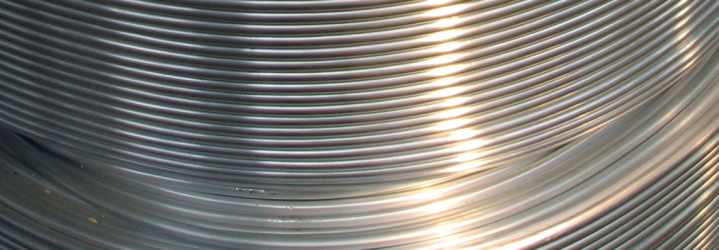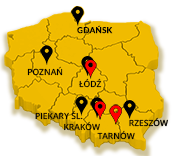
Aluminium
Aluminium is the third most common element present in the earth’s crust. The old name of the uppermost part of the earth’s crust – sial – derives from symbols of silicon (Si) and aluminium (Al). Aluminium salts and oxides have been known since the dawn of the history. Alum, the hydrated mixable aluminium sulphate was used as an antiseptic by the ancient Greeks. The existence and the name of this element were suggested in 1761 by Louis-Bernard Guyton de Morveau. A similar suggestion was made in 1807 by Sir Humphry Davy, who proposed the contemporary name of aluminium. There are controversies over who first isolated this element in a pure state. According to some sources, it was Friedrich Wöhler in 1827 and according to others, Hans Christian Ørsted in 1825. In 1886 Charles Martin Hall, an American, and Paul-Louis Toussaint Héroult, a French, developed the industrial production of aluminium. They found the method of receiving aluminium in the process of electrolysis of a melted mixture of cryolite and bauxite, currently known as the Hall–Héroult process.
Aluminium is mainly acquired from bauxite. The output from the mine goes to an enrichment plant in which bauxite is converted into aluminium oxide. The first operations are:
- Refinement of the ore to the consistence of sand in a ball grinder,
- Extraction of aluminium oxide in the course of the Bayer process in which ground bauxite is mixed with quicklime and sodium hydroxide.
The product is placed in pressure containers and heated up to 240 °C, which results in forming sodium aluminate. Having separated non-soluble impurities from sodium aluminate in gravitational containers, hydrolysis is carried out. In the presence of nuclei of crystallization, aluminium hydroxideprecipitates, which in the calcination process is converted into aluminium oxide.
In the electrolytic Hall–Héroult process, aluminium oxide is converted into free metal as a result of:
- Solving aluminium oxide in electrolyte, being molten cryoliteof the temperature higher than 900 °C,
- Submerging the graphite anode in the bath and carrying out electrolysis with current intensity of a few hundred thousand ampere.
The electrolysis is carried out in electrolytic tanks that are built in the shape of metal baths lined with insulation material and compact carbon mass that forms the cathode. Between ten and twenty electrodes that form anodes are hung above the bath. The output of the electrolysis is so called primary aluminium of a 99.0-99.6% content of Al. Aluminium received this way is used as a raw material for aluminium castings and alloys. Impurities are removed from aluminium with the method of electric refinement. Primary and refined aluminium belongs to very plastic metals that can be easily worked not only hot but also cold by rolling, pressing or pressing. As a semi-finished product, aluminium is used in the form of ingots.








 Aluminium
Aluminium












